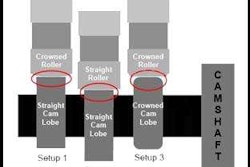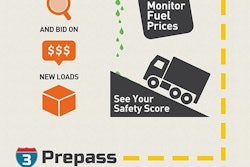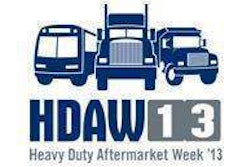It was the best of times. It was, well, not too bad times, all in all. That’s probably the best way to look at the trucking industry these days.
In May, the American Trucking Associations’ for-hire truck tonnage index hit an all-time high, exceeding the previous high in December 2011. And yet, the findings and comments from the May 2013 Randall-Reilly MarketPulse survey of for-hire trucking executives suggest May was a good month but not necessarily a great one.
“Freight has improved a little, but not the Q2 surge that we saw the last few years,” said one executive in the survey. “The freight market just continues to take two steps forward, one step back,” said another. And even when things are going well, many trucking executives seem to think it’s just a blip. “Our business has spiked upward, but we are still cautious and will remain so,” said one.
These are not comments you would expect to read during the month when carriers hauled more tons than any other month ever. What gives?
It’s important to recognize that ATA’s index measures freight tonnage. But cargo weight is just one way to look at volume; another is loads. ATA Chief Economist Bob Costello points out the growth in tonnage continues to outpace that in loads.
We have already discussed a couple of times this year the idea that larger trucking companies are faring better than smaller ones. But that’s not the only notable split.
As we noted briefly last month, Costello, speaking in May at the Commercial Carrier Journal Spring Symposium in Birmingham, Ala., pointed out that loads were up year over year in the first quarter of 2013 for all segments except dry van, which was down 3.5 percent. We focused last month on how that 3.5 percent drop breaks down between large and small carriers. This month, let’s look at the dry van segment as a whole relative to other segments, such as flatbed, tank and dump.
What’s happening, Costello says, is that much of the tonnage growth is coming from two freight categories: Housing construction materials (lumber, brick, concrete, shingles, tile, etc.) and necessities for hydraulic fracturing, or fracking (mainly sand and water). That’s all heavy stuff. If, however, there were a sudden surge in the demand for bubble wrap or potato chips, it wouldn’t affect tonnage that much.
Fracking — a method for extracting petroleum and natural gas — has revitalized the economy in specific regions of the country, such as the Rust Belt, the Upper Plains and the traditional oil producing areas such as Texas, Oklahoma and Louisiana. And it has been a boon to trucking activity in those areas. (For more on Fracking, see Inside the Numbers, January 2012).
And housing construction has gone from one of the biggest drags on the economy to one of its biggest drivers, primarily because demand is normalizing but construction has been depressed for about six years. In May, housing starts were up 6.8 percent over April, but construction still isn’t keeping pace with demand.
As housing starts mature to completed homes, dry van carriers will see some benefits, too, in the form of appliances, flooring, furniture, and so on. But what truly drives dry van freight are manufacturing and retail, and freight in both have been sluggish and inconsistent for the most part.
One exception, at least recently, has been automotive. Although that’s certainly a vital industry, especially in the Midwest and certain parts of the Deep South, it doesn’t produce enough freight to sustain the entire van industry.
The key lesson is that a rising tide doesn’t lift all boats — at least not to the same level at the same. So when you read that tonnage is at all-time high, for example, that doesn’t mean fleets of all sizes, hauling all goods, in all regions.
It’s vital to examine your customer base and the particulars of your local economies to guess whether you likely will see more demand for maintenance or less in the near term.










